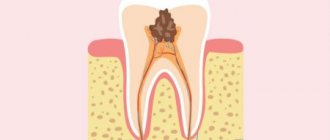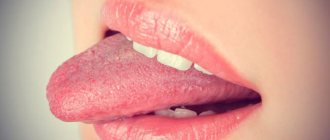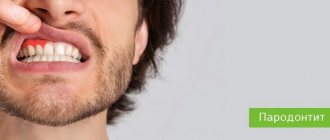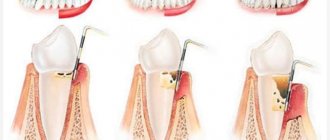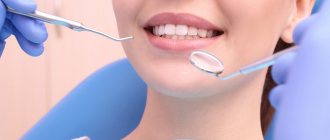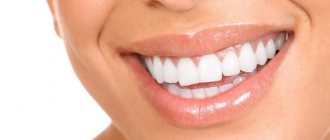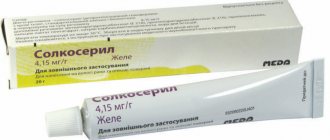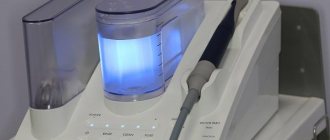Periodontitis is an unpleasant thing, but not fatal. According to dental research, signs of periodontitis or periodontal disease occur in literally everyone during their lifetime. The outer part of the gums is the most delicate part of the epithelium in the body. Among dental diseases, only caries is more widespread.
Periodontitis is a broad group of inflammation of the gums. The cause of such damage is deposits on the teeth, which especially worsen with age. Swollen parts of the gums (especially between the teeth) begin to bleed. Hirudas are a highly effective remedy for normalizing metabolism, improving blood circulation and saturating the blood with useful substances.
Treatment of gums with leeches - my 100% result
What was the treatment and what did not cure it?
100% guarantee of cure for periodontitis!
Tried, tested, analyzed and approved! Periodontitis is an inflammatory disease of the gum tissue that surrounds and supports the tooth (periodontal). I didn’t post photos from the Internet illustrating this disease, because... the picture is unpleasant to the eye. In general this manifests itself:
- bleeding gums when biting hard food,
- swelling,
- significant formation of dental calculus,
- softening of gums and loosening of teeth…….
A lot has been written on the Internet about this disease. Most doctors talk about possible causes and, accordingly, possible methods of treating it. Interestingly, doctors believe that one of the reasons is the lack of the proper amount of solid food in the diet and, therefore, the lack of stress on the gums (a kind of physical activity for them). So people with gum problems need to switch to healthy plant-based and raw foods.
In reality, treatment in a dental clinic takes place in several directions:
- removal of dental plaque (relief from “tartar” that is pressing and interferes with blood supply)
- cleaning teeth for disinfection
- physiotherapy to restore blood supply to the gums
- applying applications with various ointments and compositions to strengthen tissues
- injections of B vitamins and drugs that relieve inflammation.....
The scheme described above is the most primitive and any dentist will throw stones at me, telling me what progressive methods of treatment are already in service with doctors. I agree.
But these methods cost good money. Once. And these methods are temporary. Two. They last for half a year or a year. And then all over again.
Of course you can support it this way. Undoubtedly. But there is an absolutely radical remedy. And her name is LEECH.
Leech on the gum - and the problem is gone
I understand how many of you grimaced and were indignant... But health is more valuable than our subjective feelings.
What does a hirudotherapist do (hirudotherapy is a method of treatment using medicinal leeches) when he performs the procedure for treating periodontitis with leeches? It places leeches on problem areas of your gums. The leech pumps out “bad” blood and injects hirudin, which thins the blood. As a result, in 5-6 sessions the blood supply is restored and inflammation completely goes away, bleeding of the gums and the terrible consequences of periodontitis in the form of tooth loss are not scary for you.
In the practice of my friends, after a repeated preventive course after half a year, the problem of periodontitis goes away completely. Experience says that for 5-10 years, no symptoms of this disease appear. It is even possible to treat periodontal disease with leeches. Leeches for periodontal disease may not bring such a clear and strong effect as for periodontitis, but the fact that there will be progress in treatment is certain.
Deciding on hirudotherapy is difficult for many.
But if you read more about these amazing creatures and understand that leeches are extremely clean creatures raised in licensed medical institutions, then you will understand: leeches are wonderful healers!
Diagnosis of disc protrusion
Neck pain from radiculopathy and the absence of red flag symptoms usually do not require imaging or other special tests. However, for verification purposes, the doctor may prescribe the following research methods:
Blood tests
may be prescribed to exclude infectious or inflammatory diseases (a decrease in hemoglobin may be a sign of anemia; an increase in ROE may be a sign of both infection and inflammation; the level of rheumatoid factor and HLA-B27 determination may indicate systemic connective tissue diseases).
Medical imaging tests are very important, but they must be interpreted in light of the clinical picture, since positive results are quite common in people without any complaints:
• Radiography
. Plain x-rays of the cervical spine can be used to evaluate chronic degenerative changes, metastatic tumors, infection, spinal deformity, and motion segment stability. Interpretation of study results is often difficult because degenerative signs are almost universal in people over 35 years of age.
• MRI.
This imaging method may be prescribed if radiography does not allow the genesis of symptoms to be determined. MRI should be performed to diagnose disc protrusion (herniation) and the presence of compression of nerve structures.
• CT myelography
can be used if there are any contraindications to MRI.
•EMG (ENMG
) - these methods can be informative in the presence of radiculopathy or the need to determine the level of damage and differentiate cervical radiculopathy from nervous compression syndromes.
Treatment with medicinal leeches at the Dial-Dent clinic, indications for hirudotherapy
At the Family Dental Clinic, hirudotherapy is used in the cosmetology department.
Indications for the use of leeches in cosmetology:
- face lift;
- relieving swelling on the face and body;
- skin rejuvenation on the face and entire body;
- reduction of wrinkles;
- reducing acne scars so that they heal faster and are less noticeable;
- correction of cosmetic intervention (reducing the consequences of excessive administration of hyaluronic acid);
- treatment of varicose veins.
Medical leeches can be placed on the face and body. Depending on the location and the problem being solved, leeches of different sizes are selected. Microleeches (about 1 centimeter) are placed on the face, medium-sized leeches are placed on the body, large leeches are used for large problem areas on the body.
Depending on the indications, leeches are applied 1-2 times a week. The standard course of hirudotherapy is 10 sessions.
Cosmetologist Pavel Olegovich Kusin, who practices hirudotherapy at Dial-Dent, was trained at the Hirudocenter and has more than 5 years of experience in treatment with medicinal leeches. In addition to leeches, Pavel Olegovich uses the most modern technologies and drugs. The combination of different approaches in cosmetology makes it possible to obtain maximum effect and health benefits.
What are the benefits of leech treatment?
A hirudotherapy session lasts from 15 minutes to 1 hour.
Leeches are applied by a specialist to the appropriate areas of the skin. They find a place for a bite, after which they make “punctures” up to 1.5 mm deep and suck out 5–15 ml of blood, while simultaneously introducing various biologically active substances into the human body, thanks to which, in particular, bites practically do not cause any discomfort to the patient . Up to 80% of the active substances accumulate in the area of influence, so leeches are applied as close as possible to the affected area. During a session, up to 7 leeches are used. The course of treatment ranges from 5 to 7 sessions. The therapeutic effect of hirudotherapy is explained by three main factors:
- mechanical effect (reducing the load on regional blood flow);
- influence on the body of biologically active substances;
- reflex action on active points.
Leeches prefer to be located on biologically active points of the body, due to which their bites act as acupressure, so that hirudotherapy in its effect on the body is partly similar to acupuncture.
Research into the composition and properties of leech saliva began in the 20th century. Today it is already known in sufficient detail how the substances contained in it affect the human body:
- hyaluronidase improves tissue permeability and helps reduce swelling;
- hirudin reduces blood clotting;
- a histamine-like substance increases blood flow to the bite site;
- bdellins and eglins are natural inhibitors of proteolytic enzymes and help eliminate inflammatory processes;
- the destabilase complex has an antithrombotic effect;
- neurotrophic factors cause the growth of nerve cell processes, which makes the use of hirudotherapy effective after a stroke and in patients with cerebral palsy.
Causes
- Degeneration or wear that leads to disc failure.
- Repetitive flexion (extension) and twisting movements, especially in combination. These movements have the greatest impact on the outer annulus fibrosus of the disc.
- Discs are most susceptible to injury in a sitting or bending position because pressure on the disc is shifted anteriorly and the vector of force forces the contents of the disc posterolaterally toward the thinner, weaker portion of the annulus fibrosus.
- Fall or injury such as a car accident.
- Repetitive stress injuries from overhead work or weightlifting.
- Genetic factors may, to a certain extent, contribute to the early development of degenerative changes in the discs (osteochondrosis).
- Smokers are more likely to develop early disc degeneration
- Infection (discitis)
Contraindications for hirudotherapy
Hirudotherapy also has some contraindications, but there are very few of them. People suffering from hemophilia, congenital incoagulability and severe anemia, which causes a decrease in the number of red blood cells in the blood, should not be treated with leeches.
Contraindications for such treatment are also hemorrhagic diathesis, pregnancy, and persistently low blood pressure. Some people may have both
individual intolerance to one of the components contained in the secretion of the salivary glands of the leech.
TREATMENT METHODS WE USE
- hirudotherapy - applying a leech locally, according to indications;
- hirudoreflexotherapy - applying a leech to biologically active points and chakras;
- hirudotherapy + medical cupping - hirudotherapy followed by application of a medical cup to the working areas;
- hirudotherapy + autohemotherapy - hirudotherapy followed by intradermal injection of autologous blood extracted from a leech.
The specialist selects the duration of the hirudotherapy course individually for each patient. Typically, to achieve maximum results, you need to complete 7-10 sessions. It is best to carry them out 1-3 times a week. Hirudotherapy can be combined with herbal medicine, massage and other treatment methods.
Why us
- Doctors. Specialists of the highest qualification category, with academic degrees and extensive experience in practical and scientific work.
- Accurate diagnosis. Informative and painless examination: ultrasound of the abdominal organs, blood vessels, the whole range of necessary laboratory tests - determination of blood glucose levels and the amount of glycated hemoglobin, diagnosis of metabolic disorders and the presence of signs of atherosclerosis, etc.
- Complexity. Comprehensive treatment developed specifically for you, taking into account the full clinical picture with the participation of all necessary specialists: endocrinologist, nutritionist, therapist, cardiologist, ophthalmologist, etc.
- High tech. High-tech treatment using extracorporeal hemocorrection methods, which reduces the risk of developing microangiopathies (diabetic foot, visual impairment, renal failure) and makes it possible to increase tissue sensitivity to insulin and reduce the dosage of medications.
- Diabetes Check-up. The opportunity to be examined yourself and have your loved ones checked using the “Diabetes Check-up” program in order to eliminate even the slightest chance of developing this pathology in your loved ones.
- Convenience and comfort. All diagnostic and treatment units are located in a single complex of our hospital, which significantly saves the time and effort of our patients.
Indications for the use of HIRUDOTHERAPY:
Diseases of the cardiovascular system:
- IHD, angina pectoris, post-infarction cardiosclerosis
- Hypertension stage I-III.
- Atherosclerosis of various localizations
Respiratory diseases:
- Bronchitis acute, chronic
- Pneumonia (recovery period)
- Bronchial asthma, COPD
- Chronic gastritis (except for erosive forms in the acute stage)
- Peptic ulcer of the stomach and duodenum (not exacerbation)
- Chronic pancreatitis
- Chronic colitis, enterocolitis
- Transient cerebrovascular accidents: transient ischemic attacks, hypertensive cerebral crises
- Ischemic stroke (recovery period)
- TBI, concussion, concussion
- Migraine
- Headache
- Trigeminal neuralgia
- Facial nerve neuropathy
- Tunnel syndromes
- Dorsopathies
- Polyneuropathy
- Ankylosing spondylitis
- Various diseases and injuries (sprains, bruises, dislocations, hematomas, contractures)
- Limb fractures
- Arthritis of various etiologies and localizations
- Arthrosis
- Tendon diseases (tendonitis, tendovaginitis)
- Bursitis, periarthritis
- Inflammatory processes (abscesses, boils, carbuncles, phlegmons, felons, at the stage of infiltration or after surgery; osteomyelitis)
- Prevention and treatment of postoperative scars, infiltrates
- Condition after reconstructive operations
- Diseases of the veins of the lower extremities (varicose veins, thrombophlebitis, trophic ulcers)
- Haemorrhoids
- Mastitis
- Obliterating endarteritis
What is resection
Removal of a dental cyst is most often carried out by excision of the root and removal of the affected fragments. Then, to avoid the spread of infection to adjacent areas of hard and soft tissue, the canal is sealed. The complex of these surgical procedures is called root apex resection. In fact, this is the simplest way to remove a dental cyst, often used when identifying the disease in the initial stages. It is important that the operation is tooth-saving, that is, it makes it possible not to part with the molar. If the element can be preserved completely, then it can serve a person for a lifetime. If a fragment of the unit remains, it is used as a basis for further prosthetics. Tooth-preserving methods are valued by doctors because they allow not to remove a unit and maintain the integrity of the row. Therefore, resection of the root apex is used not only to remove a dental cyst, but also in some other cases.
- When an element covered by a crown becomes inflamed. It would seem that the obvious solution is to remove the prosthesis, remove the abscess, and install a new structure. However, this manipulation is more expensive and time-consuming than root resection.
- If the base under the fixed implant pin begins to tear. It is impossible to remove it, so the only way out in such situations is excision of the root and elimination of the lesion.
- Root canal abscess resulting from poor-quality filling or the use of low-grade materials. Such cases are especially common in systems with curved roots.
- When osteomyelitis is detected. There is a need to cut out the affected areas of bone tissue bordering the root trunks. This helps prevent infection of deep structures.
- In case of detection of foreign objects in the channels, for example, boron particles. This happens when using cheap soft metal equipment. Our clinic uses modern instruments based on titanium alloys.
REMEMBER! Properly performed resection not only allows for prompt removal of the dental cyst, but also strengthens the bone tissue, which over time completely restores function. However, even such an effective operation has contraindications. Resection is not done if the roots of diseased and healthy elements are located too close; when there are extensive crown chips; with abnormally high mobility of units; in the stage of acute periodontitis. It is not recommended to perform manipulation for people with diabetes, mental and nervous disorders, chronic heart and vascular diseases, pathologies of the lungs and thyroid gland.
Indications for hirudotherapy:
- rheumatoid arthritis
- gout
- reactive arthritis
- psoriatic arthritis
- Ankylosing spondylitis (ankylosing spondylitis)
- scleroderma
- osteochondrosis
- rheumatism
- septic arthritis
- arthrosis
- osteoporosis
- psoriasis
- neurodermatitis
- hypertonic disease
- diabetes
- hypothyroidism
- cardiac ischemia
- polyneuritis
- migraine
- lipid metabolism disorder
- hypercoagulability and increased blood viscosity
- violation of venous and lymphatic outflow
- thrombophlebitis
- adhesions
- trophic disorders
- cellulite
- obesity
- chronic inflammatory processes of the pelvic organs
- use after plastic cosmetic surgery
- excessive formation of connective tissue (scars, adhesions, etc.)
- ophthalmological diseases (glaucoma, iridocyclitis)
There are contraindications to hirudotherapy, although they are few, you need to know clearly. Considering the fact that the use of hirudotherapy is not associated with any side effects, it becomes clear why now, in the third millennium, the “ordinary miracle” of nature - the medicinal leech plays a significant role in medical practice.
Differential diagnosis of neck pain
As a rule, most back pain is associated directly with changes in the discs (protrusion, disc herniation), however, for an accurate diagnosis it is necessary to use medical imaging methods.
Differential diagnoses include:
- Cervical spondylosis.
- Traumatic prolapse of an intervertebral disc.
- Neck pain: acute neck strain, postural neck pain, or pain associated with whiplash injury
- Headache.
- Referred pain - for example, from the shoulder.
- Malignancies: primary tumors, metastases or myeloma.
- Infections: discitis, osteomyelitis or tuberculosis.
- Fibromyalgia.
- Vascular insufficiency.
- Psychogenic neck pain.
- Inflammatory diseases (for example, rheumatoid arthritis).
- Metabolic diseases: Paget's disease, osteoporosis.
